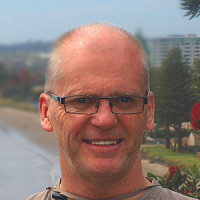Activation report - Pete Dakin
About this report
The results shown in the Activation assessment below are grouped into five parts.
The report begins with an exploration of Pete’s “external rewards”. These three preferences (Material Reward, Career Reward and Social Reward) reveal the mix of influences from outside Pete, which move him to take action.
Next, we’ll display five “internal drives” - A Person, A Producer, A Helper, A Catalyst and Pressure of Time - each of which plays its part, not only on Pete’s potential on-the-job performance but also in the way he rates his personal satisfaction with whatever he’s doing.
To create an even more complete understanding of Pete’s activators, we delve into three separate “focus contexts”: the past, the present and the future.
Finally, we’ll complete the picture by showing Pete’s self-perception of his progress towards his own personal goals.
Results for Pete Dakin
-
When it comes to Material Reward, Pete is only slightly influenced by the prospect of financial gain or other material benefits. He may expect these though, to reward his efforts or achievements (perhaps but not exclusively in a work context).
-
Pete is somewhat motivated by the prospect of Career Reward. He may respond well to the prospect of, say, a leadership role, or a place in a group, team or organisation.
-
Rather than seek Social Reward, Pete is likely to be quite happy in his own company. Seeking out new relationships or extending existing friendships won’t be something that overly meets his needs.
-
Pete responds very favourably to acceptance as an equal and to recognition as A Person - of who he is rather and not just the role he plays or the work he does. A person of high self esteem, he thinks highly both of himself and of other people.
-
When it comes to Pete’s self-perception as A Producer, there is a moderate indication that he’ll respond to pressure to take action. Depending on the situation, he could certainly be influenced by reference to his work or results.
-
Pete will be responsive to requests for help or support and to opportunities to serve others. As A Helper, if the need is great enough, he’ll change his priorities for others, and may also take on their responsibilities if asked.
-
As A Catalyst, he responds to difficult tasks and challenges by working to set his own objectives and priorities, and to choose his own work methods. Pete needs to feel that he has freedom to operate and will look to create that if he can.
-
He’s likely to respond more to other intrinsic rewards (A Person, A Producer, A Helper and A Catalyst) than to Pressure of Time as a reason to take action.
-
When it comes to strategies for learning from experience, Pete spends some of his time thinking about the past - but not much. As someone who knows he can’t change his personal history through Focus on Past, his focus is divided somewhat more between Focus on Present and Focus on Future.
-
With regard to his Focus on Present, Pete pays attention to the events and issues of the day, and he takes action to keep on top of things as they happen.
-
Turning to the last of the three time factors. Pete is certainly influenced by what might happen in the future, and his actions are somewhat directed at future events. His Focus on Future and the resulting feelings of anticipation may alternately encourage then discourage him, as his expectations change.
-
Lastly, on Pete’s self-perception of Headway: he clearly has a coherent plan for his future, and with it, a high degree of confidence that he’ll achieve his personal objectives by following his particular course of action.
Notes about the first three factors
Remember, Material Reward, Career Reward and Social Reward are concerned with rating and comparing three external or ‘extrinsic’ rewards. The main significance of these factors is that they’re usually beyond the direct control of those who seek them. It’s likely that, as with most people, Pete has to “earn” these rewards from his environment. As his circumstances change, so his desire for these rewards will be changing, and these factors simply represent where things stand as of now.
Notes about the next five factors
Feelings, and how we arrive at them, are a complex area. As a way of addressing that complexity, and to allow Pete the space to keep his feelings private, we examine five intrinsic recognition drivers, which report on Pete’s need for recognition as: A Person, A Producer, A Helper and A Catalyst. Also in this group is Pressure of Time, which depicts Pete’s need to gain recognition for meeting time pressures.
Focus of Activation
The next three behaviours, Focus on Past, Focus on Present and Focus on Future, help to place activation into a context, by reporting Pete’s orientation to past, present and future events.
The final factor
The report’s last factor, Headway, examines perceived ‘life position’, offering insight into how Pete perceives his progression when it comes to things like, for example, "Where have I come from – how did I get here – where am I now – where am I going – how do I get there – will I get there?"

